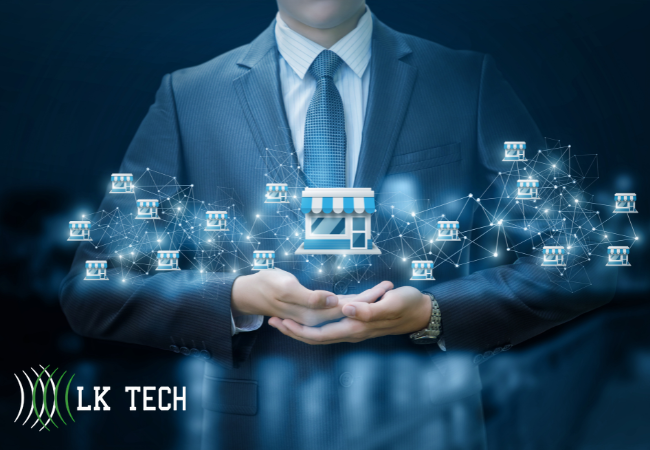Before diving into the challenges and benefits of legacy systems, it's important to have a clear understanding of what exactly a legacy system is. In this article, we will define legacy systems, explore their characteristics, and provide common examples. An IT Service Provider can offer valuable insights and support in managing and transitioning from these legacy systems.

What is a Legacy System?
A legacy system refers to any outdated software, hardware, or technology infrastructure that is still in use within an organization. These systems are often built on older technologies and may have been in operation for a significant period of time. Legacy systems are typically associated with older business processes and may lack compatibility with modern technologies.
Characteristics of Legacy Systems
Legacy systems exhibit several key characteristics that set them apart from newer systems:
- Age: Legacy systems are typically older, often having been in use for several years or even decades. As a result, they may not have kept pace with the latest advancements in technology.
- Lack of Support: Due to their age, legacy systems may no longer be actively supported by the original vendors or developers. This lack of support can make it challenging to address issues or implement updates.
- Outdated Technology: Legacy systems are built on older technologies, which may no longer be compatible with newer software or hardware. This can limit integration capabilities and hinder interoperability.
- Complexity: Over time, legacy systems may have undergone numerous modifications and customizations. These changes can result in complex and convoluted code, making it difficult to understand and maintain the system.
Common Examples of Legacy Systems
Legacy systems can be found in various industries and organizations. Here are some common examples:
| Industry | Legacy System |
| Banking | Mainframe systems for core banking operations |
| Healthcare | Electronic Medical Record (EMR) systems |
| Manufacturing | Manufacturing Execution Systems (MES) |
| Transportation | Legacy airline reservation systems |
| Government | Legacy tax management systems |
It's worth noting that not all legacy systems are inherently bad or outdated. Some legacy systems continue to function effectively and meet the needs of organizations. However, it is important to evaluate the risks, challenges, and benefits associated with legacy systems to determine the best course of action for your organization.

Challenges of Legacy Systems
Legacy systems, while they may have served organizations well in the past, come with their own set of challenges. These challenges can impact the efficiency, security, and overall performance of the system. Let’s explore three key challenges commonly associated with legacy systems: maintenance and support issues, security risks, and integration challenges.
Maintenance and Support Issues
One of the primary challenges of legacy systems is the difficulty in maintaining and supporting them. As technology advances and new software and hardware components are introduced, legacy systems may struggle to keep up. Finding skilled professionals who are knowledgeable about outdated technologies can be challenging, leading to a shortage of resources for maintenance and support tasks.
Moreover, legacy systems often rely on outdated programming languages and frameworks, which can make it harder to find developers who are proficient in these technologies. This lack of expertise can result in longer resolution times for issues and delays in implementing necessary updates or fixes.
Security Risks
Legacy systems can pose significant security risks to organizations. These systems were often designed before modern security practices and standards were established, making them more vulnerable to cyber threats. Outdated software and hardware components may lack essential security patches and updates, leaving them susceptible to exploitation by attackers.
Additionally, legacy systems may not have robust security features, such as encryption or multi-factor authentication, which are now considered standard in modern systems. This makes them an attractive target for hackers looking to gain unauthorized access to sensitive data.
To mitigate security risks, organizations with legacy systems should consider implementing security measures such as regular vulnerability assessments, email filtering, strong password policies, and multi-factor authentication to enhance the protection of their systems and data.
Integration Challenges
Integrating legacy systems with newer technologies and applications can be a complex and challenging task. Legacy systems often use proprietary protocols and interfaces that are not compatible with modern integration standards. This can hinder the seamless flow of data and information between the legacy system and other systems within the organization.
Moreover, integrating legacy systems with newer enterprise resource planning (ERP) systems or other business-critical applications may require extensive customization and development. This can lead to increased costs, longer implementation times, and potential data inconsistencies.
Organizations dealing with integration challenges should consider utilizing modern integration techniques, such as application programming interfaces (APIs) and service-oriented architecture (SOA), to bridge the gap between legacy systems and newer technologies. These approaches can facilitate smoother data exchange and streamline business processes.
Understanding and addressing these challenges is crucial for organizations that rely on legacy systems. By acknowledging the maintenance and support issues, security risks, and integration challenges associated with legacy systems, businesses can develop effective strategies to overcome these obstacles and ensure the optimal performance and security of their technology ecosystem.
Benefits of Legacy Systems
Legacy systems, despite their outdated reputation, offer several benefits that make them valuable assets for businesses. Let's explore some of these benefits: stability and reliability, cost-effectiveness, and business process familiarity.
Stability and Reliability
One of the notable advantages of legacy systems is their stability and reliability. These systems have been in place for a significant period, which means they have undergone extensive testing and bug-fixing. As a result, legacy systems often have a proven track record of performing consistently and reliably.
Businesses that rely on critical processes and operations can benefit from the stability of legacy systems. These systems have been fine-tuned over time, offering a level of predictability that newer technologies may not always provide. The established nature of legacy systems can instill confidence in organizations, ensuring continued business operations without major disruptions.
Cost-Effectiveness
Another compelling advantage of legacy systems is their cost-effectiveness. Upgrading or replacing an entire system can involve substantial investments in terms of time, money, and resources. Legacy systems, on the other hand, have already been implemented and paid for, alleviating the need for significant upfront expenses.
Maintenance and support costs for legacy systems can also be relatively lower compared to implementing new technologies. IT teams are often well-versed in maintaining and troubleshooting legacy systems, reducing the need for extensive training or hiring specialized personnel. This cost-saving aspect can be particularly beneficial for businesses with limited budgets, allowing them to allocate resources to other critical areas.
Business Process Familiarity
Legacy systems are often deeply ingrained within an organization's business processes. Over time, employees become familiar with operating and navigating these systems, which can lead to increased efficiency and productivity. The familiarity with legacy systems allows employees to leverage their expertise and complete tasks efficiently without the need for extensive retraining.
Furthermore, legacy systems can be customized and tailored to fit the unique requirements of a business. The ability to adapt and customize these systems to specific business processes can lead to streamlined operations and improved overall productivity. This familiarity and customization aspect can make legacy systems an integral part of an organization's day-to-day activities.
Recognizing the stability, reliability, cost-effectiveness, and familiarity with business processes offered by legacy systems helps businesses make informed decisions about their technology strategies. However, it's crucial to consider and evaluate factors such as maintenance and support requirements, scalability limitations, and integration challenges before committing to a legacy system. You can explore these aspects in more detail in our section on risks and considerations.

Strategies for Dealing with Legacy Systems
Legacy systems can pose significant challenges to businesses, but there are strategies that can be employed to address these issues effectively. When dealing with legacy systems, businesses have several options to consider: modernization approaches, migration strategies, and hybrid solutions.
Modernization Approaches
Modernization approaches involve updating and improving the existing legacy system while retaining its core functionality. This approach aims to enhance the system's performance, scalability, and maintainability without completely replacing it. Modernization can include activities such as refactoring code, adopting new development methodologies, and integrating modern technologies.
One modernization approach is the use of service-oriented architecture (SOA) or microservices to modularize the system. This allows for greater flexibility, as different components can be updated or replaced independently. Another approach is the adoption of cloud computing, which can provide scalability, cost-efficiency, and improved accessibility.
Migration Strategies
Migration strategies involve moving from the legacy system to a new system entirely. This can be a complex and time-consuming process, but it offers the advantage of adopting modern technologies and taking advantage of their benefits. Migration can involve transferring data, rewriting or redeveloping applications, and integrating with new systems or platforms.
One common migration strategy is the adoption of an enterprise resource planning (ERP) system. ERP systems provide integrated solutions for various business functions, streamlining processes and improving efficiency. Another migration strategy is the implementation of new software solutions that address specific business needs, such as customer relationship management (CRM) or supply chain management (SCM) systems.
Hybrid Solutions
Hybrid solutions combine elements of both modernization approaches and migration strategies. This approach involves integrating new technologies and systems with the existing legacy system. Hybrid solutions allow businesses to leverage the benefits of modern technologies while minimizing disruption to their operations.
For example, businesses can choose to develop new applications or functionalities using modern programming languages or frameworks and integrate them with the existing legacy system. This approach enables businesses to gradually transition to the new system while preserving critical functionalities and minimizing risks.
When considering strategies for dealing with legacy systems, it's crucial to assess the specific needs and goals of the business. Factors such as budget, timeline, and resource availability should be taken into account. It's recommended to consult with IT professionals or experts to determine the most suitable strategy for your business.
Adopting modernization approaches, migration strategies, or hybrid solutions allows businesses to effectively address challenges posed by legacy systems and unlock potential improvements in performance, scalability, and efficiency. Assessing risks, careful planning, and evaluating the impact on the business are crucial steps before implementing changes. This approach ensures a smooth transition and maximizes the benefits of updating technology infrastructure.

Risks and Considerations
As businesses evaluate their technology landscape, it's important to understand the risks and considerations associated with legacy systems. Legacy systems, although once valuable, can pose challenges in today's rapidly evolving technological environment. Here are the risks and factors to consider when dealing with legacy systems, highlighting the importance of planning and evaluation:
Legacy System Risks
Legacy systems come with inherent risks that can impact the efficiency and competitiveness of a business. Some of the common risks associated with legacy systems include:
- Limited Support: As technology advances, the availability of support and expertise for legacy systems diminishes. This can lead to difficulty in finding qualified professionals who can maintain and enhance these systems.
- Security Vulnerabilities: Legacy systems may lack the robust security features and updates required to combat modern cyber threats. This makes them more susceptible to breaches, potentially exposing sensitive data.
- Incompatibility with Modern Technologies: Legacy systems may struggle to integrate with newer technologies and platforms, hindering the ability to take advantage of emerging trends and innovations.
- Scalability and Flexibility Limitations: Legacy systems often lack the scalability and flexibility needed to adapt to changing business requirements and customer demands. This can impede growth and hinder agility.
Factors to Consider Before Making Changes
Before making any changes to legacy systems, it's crucial to carefully consider a few key factors. These include:
- Business Impact: Assess the potential impact on your business operations, including productivity, customer experience, and revenue. Evaluate whether the benefits of making changes outweigh the potential disruptions.
- Cost and Return on Investment: Determine the financial implications of maintaining or modernizing the legacy system. Consider the costs associated with ongoing support, maintenance, and potential upgrades, as well as the expected return on investment.
- Compatibility with Existing Systems: Analyze the compatibility of the legacy system with other critical systems and applications. Consider how changes to the legacy system may impact the overall technology ecosystem and its integration capabilities.
- Resource Availability and Expertise: Evaluate the availability of resources and expertise required to make changes to the legacy system. Assess whether your internal team has the necessary skills or if external support is required.
- Business Continuity: Consider the potential risks to business continuity during the transition period. Develop a plan to manage potential disruptions and ensure that critical business processes are not compromised.
Importance of Planning and Evaluation
Proper planning and evaluation are crucial when dealing with legacy systems. A well-thought-out strategy can help mitigate risks and ensure a smooth transition or modernization process. Key considerations include:
- Assessment and Audit: Conduct a comprehensive assessment of the legacy system to gain a thorough understanding of its strengths, weaknesses, and dependencies. This will inform the decision-making process and help prioritize actions.
- Exploration of Alternatives: Explore different options, such as modernization approaches, migration strategies, or hybrid solutions, to determine the most suitable path for your business. Consider the long-term benefits and alignment with your organization's goals.
- Testing and Validation: Before implementing any changes, thoroughly test and validate the proposed solutions. This will help identify potential issues and ensure that the new system meets the desired objectives.
- Change Management: Implement a well-structured change management process to minimize disruption and ensure a smooth transition. Provide adequate training and support to users to facilitate the adoption of new systems or processes.
- Regular Review and Adaptation: Continuously monitor and review the performance of the updated or modernized system. Make necessary adaptations and improvements to maintain alignment with evolving business needs and technological advancements.
Understanding the risks and considering key factors helps businesses make informed decisions regarding their legacy systems. Planning and evaluation are essential to ensure a successful transition, modernization, or migration process, ultimately enabling businesses to stay competitive in today's dynamic technological landscape.
Moving Forward
As businesses evolve and technology advances, it is essential to assess your current system and make informed decisions for the future. This section highlights the importance of assessing your system, aligning legacy systems with business goals, and future-proofing your technology ecosystem.
Importance of Assessing Your System
Before making any changes or investments in your technology infrastructure, it is crucial to assess your existing system. This assessment helps you understand the strengths and weaknesses of your legacy systems, identify areas that need improvement, and determine the best course of action.
During the assessment process, consider factors such as system performance, security vulnerabilities, maintenance costs, and compatibility with newer technologies. By conducting a thorough evaluation, you can gain insights into the current state of your system and make informed decisions to optimize its functionality.
Aligning Legacy Systems with Business Goals
Legacy systems can sometimes hinder business growth and innovation. Therefore, it is essential to align your legacy systems with your current and future business goals. Assess how well your existing systems support the needs of your organization and identify any gaps that need to be addressed.
Consider the long-term objectives of your business and evaluate how your legacy systems align with these goals. Identify areas where improvements can be made to enhance operational efficiency, increase productivity, and support business growth. This may include integrating new technologies, upgrading hardware or software components, or implementing new processes to streamline operations.
Future-Proofing Your Technology Ecosystem
In an ever-changing technological landscape, it is crucial to future-proof your technology ecosystem to stay competitive and agile. This involves adopting strategies that allow your systems to adapt and evolve as new technologies emerge.
To future-proof your technology ecosystem, consider implementing scalable and flexible solutions that can easily integrate with emerging technologies. Embrace cloud computing, explore opportunities for automation and artificial intelligence, and stay informed about industry trends and advancements. By continuously evaluating and upgrading your systems, you can ensure that your technology infrastructure remains robust and capable of supporting your business objectives.
Assessing your system, aligning legacy systems with business goals, and future-proofing your technology ecosystem can set your business on a path of continued growth and success. Consulting with IT professionals and leveraging their expertise helps make informed decisions that optimize your technology infrastructure.

Understand Legacy Systems and Modernize with LK Tech!
Navigate the complexities of legacy systems with LK Tech's expert guidance and modernization solutions. Legacy systems, while functional, can hinder efficiency and security. As a leading provider of Email Security Services and managed IT solutions in Cincinnati, we specialize in seamlessly transitioning businesses from outdated systems to streamlined, scalable solutions.
Whether you're grappling with outdated infrastructure or seeking to enhance operational agility, our tailored strategies ensure smooth transitions and enhanced performance. Contact LK Tech today to embark on your journey towards modernization and future-proof your IT landscape.


